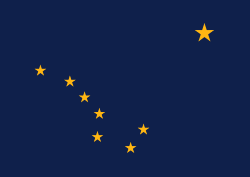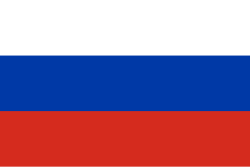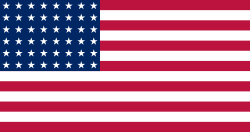 | |
| Use | Civil and state flag |
|---|---|
| Proportion | 125:177 |
| Adopted | May 2, 1927 |
| Design | Eight gold stars, in the shape of the Big Dipper on a dark blue field. The North Star is larger than the other 7. |
| Designed by | Benny Benson |
The flag of the U.S. state of Alaska displays eight gold stars, forming the Big Dipper and Polaris, on a dark blue field. The Big Dipper is an asterism in the constellation Ursa Major, which symbolizes a bear, indigenous to Alaska. As depicted on the flag, its stars can be used as a guide by the novice to locate Polaris and determine true north.
Contents
- Design and specifications
- Statute
- Symbolism
- Colors
- Origin
- Gallery
- History
- Russian-American Company Flag
- State flag
- Historical flags
- See also
- References
- External links
The design was created by Benny Benson of Seward and selected from among roughly 700 entries in a 1927 contest. In 2001, a survey conducted by the North American Vexillological Association placed Alaska's flag fifth best in design quality out of the 72 Canadian provincial, U.S. state, and U.S. territory flags ranked. It finished behind the flags of New Mexico, Texas, Quebec, and Maryland respectively. [1]


















